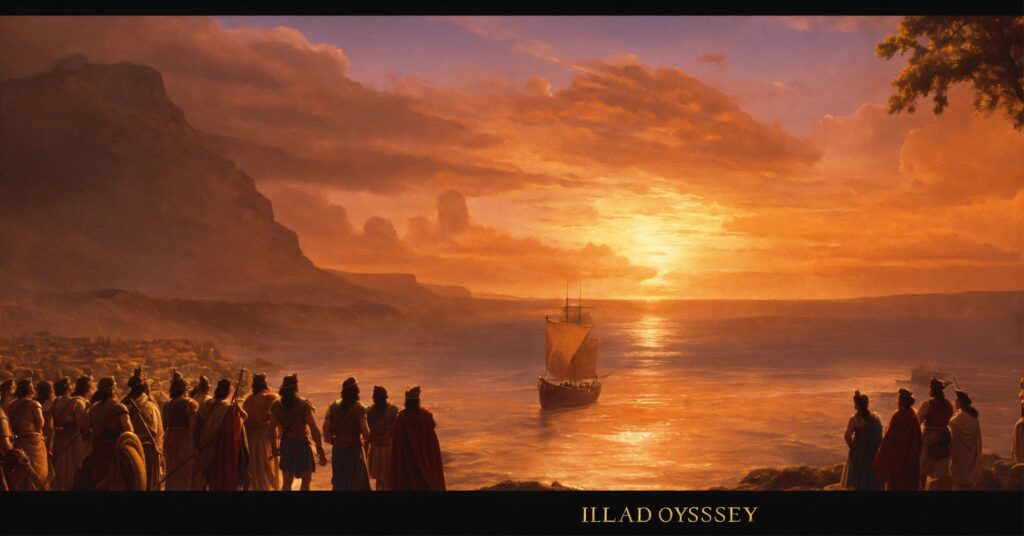Introduction: The Impact of Ancient Greece Civilization
What is the reality of ‘Hellas ideology’? If there is such a thing, what form of reason does it take? As is often said, if the Arche of Hellas philosophy was a change in the Copernican way of thinking from mythic thinking to rational thinking, how could such a transition and development have been possible? No, what is the basis or reason for enabling such an explanation of the beginning of philosophy?
How did the Hellas discover their minds and develop the reasons for their formation? These water notes are in our interest to be dealt with in this text. Before grasping and understanding the identity of Hellas thinking in earnest, let’s start by understanding the meaning of the word Hellas. What we call ‘Greece’ today is an English expression derived from the Latin Graecia. This originated from the Romans at the time called the Hellas Graikoi, and the place where they lived was called Graecia.
The main characters associated with the Great Flood of Hellas are Deucalion and Pyrrha. Hellas was the country founded by their son, Hellen, in the Thessaly area where they settled after the Great Flood. Several tribes were formed from their descendants. All of them came to be called Helen’s descendants (Hellenes), and the entire area where they lived was called Hellas.
In Homer’s poem, words that collectively sing “The Whole Hellas” have yet to be used. In his poem, Hellas pointed to only a certain part of the Kingdom of Perseus, which was later called Thessaly. (The Iliad, volume 2, line 683)
The word Hellas, which refers to “all Hellas,” first appears in Hesidos. Today, just as they call themselves Ellada, Hellenas, Hellenida(Greek, Greek-South, Women), Ancient Greeks called themselves Hellenes and called their country Hellas. Hellenes also means ‘residents of Hellas’. (Herodotus, 『History』 Volume 1).
Reading Homeros’ 『Iliad』 and 『Odyssey』 refers to the people who went on an expedition to Troia, and the expressions ‘Achan’ and ‘Danos, all refer to the Hellas. Akai refers to the northern part of the ancient Hellas Peloponnesian Peninsula The fact that Homeros refers to Hellas as “Achan,” “Argibes,” and “Danans” from time to time is nothing more than going to people from different regions.

The history of ancient Hellas
How did the historical development of ancient Hellas go through? The period before and after Hellas history is roughly divided as follows.
After the invasion of the Minas, which had the characteristics of the military, followed by the Helladic civilization centered on the early indigenous people, and the complete destruction of the Duchenne civilization in the 12th or 11th century AD, the dark ages arrived around 1100〜900 AD. There was a period of geometric patterns around 900〜725 A.D., and a period of full-scale Orient continued between 725〜650 A.D.
It was followed by Archaic around 650〜500 BC, the Golden Age of Hellas around 500〜330 BC, the period of Hellenism between 330〜67 BC, and the period of Hellas-Roman civilization between 67 AD and 323 AD. The commonly used term Hellenistic comes from the word Hellenistes, which comes from ‘Hellenizo‘.
Hellas’ civilization had to go through several stages of historical processes and an era of transformation before it entered the Classical Age and blossomed its brilliant culture.
Prior to the formation of Hellas’ civilization in the Attica region centered on Athens, the mainland of Hellas, there were Cycladic civilization and Crete civilization centered on the Aegean, which was created by the influence of Egyptian and Pediatric Asian civilizations.
Mycenaean civilization was established in the northern part of the Peloponnese Peninsula, which inherited this civilization. Mycenaean civilization is the basis of Homer’s poetry literature. Then there was a dark period of about 500 years as Mycenaean collapsed in the invasion of the Dorias.
People first appeared on the island of Crete around 7000 B.C., the beginning of the Neolithic Age Around 2600〜1900 B.C., before full-scale civilization began, neither the royal nor the palace existed yet The first palace-centered civilization was built around 1900 B.C. (2000) in Knossos, Pystos, Malia, and Zacros on the island of Crete.
Presumably, the palace civilization destroyed by the earthquake around 1700 B.C. was newly built as the “New Palace Civilization” at the same place around 1700〜1400 B.C. Around 1450〜1380 B.C., the Mycenaeans who ruled Crete used a modified Linear B of Linear A and introduced a new lifestyle and art style to Crete.
Around 1380 B.C., the Palace of Knossos was finally destroyed for unknown reasons. Scholars such as Bernard presume that the uprising that brought the destruction of the Palace of Knossos was ignited by a native uprising.
The expansion of Mycenaean Greece, which lasted in the western Mediterranean from the 14th to 12th centuries B.C., extended to the Achaeans who succeeded the Cretes. Although there were some time differences depending on the region, the Mycenaean replaced the cretins almost everywhere.
Before the 14th century B.C., the Mycenaeans had already colonized Rhodes Island. King Achaea was able to control several points along the coast of Anatolia, where his people established a base and colony in Rhodes. The emergence of Achaeans is being demonstrated in Miletos, Colophon, Cross, Lesbos further north and in the Troas region in particular. As a result, Mycenaeans extend to all parts of the Mediterranean, laying the foundation for the Hellas civilization.
Mycenae, like Crete, had a palace-centered system centered on an absolute monarch called Anax. At Mycenaeane’s palace gathered a specialized group of clerks from Crete, who gave King Mycenaean a system of staff to assist them as well as skills to govern the palace.
The palace-centric system provided the monarchs of Hellas with a remarkable means of controlling power and enabled a state that could establish strict control over vast territories. By doing so, it was possible to develop all wealth throughout the country, accumulate wealth in the hands of the monarch, and concentrate important resources and military forces under centralized control.
The palace-centric system also allowed the Hellas to go on great adventures abroad to secure new territory or to find metals and other products scarce on the Hellas mainland.

Archaic and Classic
However, with the collapse of the Mycenaean forces, a new era of civilization opened in Hellas. Iron metallurgy was followed by bronze metallurgy, and the cremation of the dead replaced the underground burial, and the pattern of pottery also changed to an era that emphasized geometric style.
Dark ages arrived in Hellas as Mycenaean was destroyed by the Dorian invasion. This was the time to prepare for Homer’s epic. Through the Homer narrative era, police emerged around the 8th century B.C., bringing a decisive event to the history of Greek thought. This was the most fundamental change in the history of Hellas Hellas then begins to enter Classic via Archaic, called Archaism or Primitivism.
Often, the term “classic” refers to the creation of the most mature and outstanding cultural products. Hellas refers to the 5〜4th century BC, especially the period of Pericles. This period was the peak of civilization. In this sense, the opposite of classical civilization is a less complete, less mature civilization. Therefore, the opposite of the classic is Archaism and Primitivism, where civilization has yet to reach its maturity, In other words, it means decadent civilization.
If the word “classic” means culture, art, and poetry with certain characteristics such as moderation, harmony, and balance with parts. Hellas art and poetry in 4〜5 A.D. can be said to be classical in this sense.
The standard of civilization, which aims for moderation, harmony, and balance revealed in classical art and poetry, has become a model for all subsequent times. Since then, it was Hellas’ classic that became the standard for naming “Classicism” in the development of European civilization.






